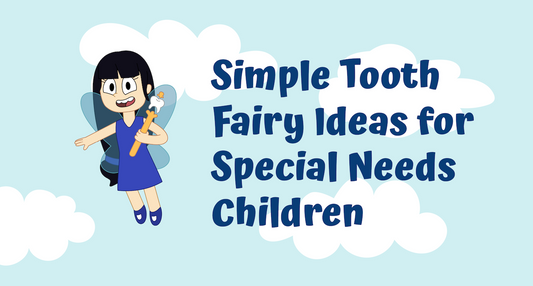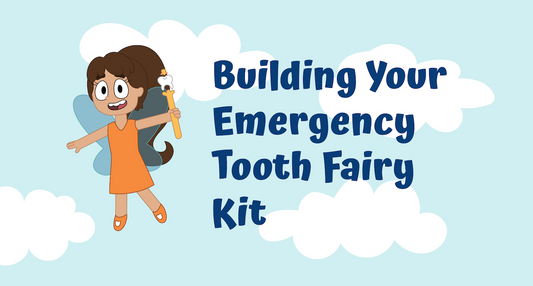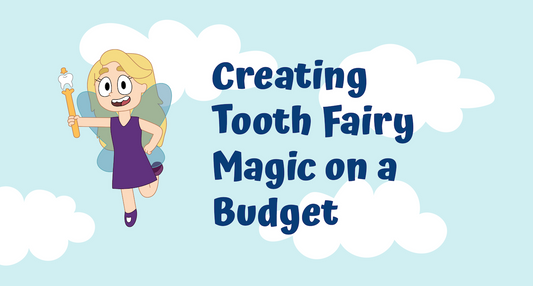The tooth fairy tradition can be just as magical for children with special needs, it just might look a little different. As parents, we want every child to experience the joy and wonder of this childhood milestone, but traditional approaches don't always work for every child. The good news? Small, thoughtful adaptations can make all the difference, and they're often simpler than you might think.
Start with What Your Child Already Loves
The most successful tooth fairy adaptations build on your child's existing interests and strengths rather than trying to force them into a traditional mold.
Use Familiar Elements: If your child has a favorite character, incorporate them into the tooth fairy story. Maybe the tooth fairy works with superheroes, or perhaps she's friends with their beloved stuffed animal. One family I know has a child obsessed with trains, so their tooth fairy travels by magical railroad and leaves tiny train-themed gifts.
Leverage Existing Routines: Instead of disrupting established bedtime routines, weave the tooth fairy into what already works. If your child needs their comfort items arranged a certain way, have the tooth fairy respect and work around those needs. The magic should feel like a natural extension of safety and comfort, not a disruption.
Honor Communication Styles: If your child communicates through pictures, have the tooth fairy leave visual notes. If they use sign language, teach the tooth fairy a few key signs. One creative parent created tooth fairy notes using their child's communication device, making it feel like the fairy truly understood their child's unique way of expressing themselves.
Sensory-Friendly Magic
Many children with special needs have specific sensory preferences that can make traditional tooth fairy elements overwhelming or unpleasant. Simple adjustments create magic that feels good instead of stressful.
When Your Child is Sensitive to Textures or Sounds
Skip the Glitter Trail: Instead of loose glitter that might feel scratchy or messy, try contained sparkles in a clear jar, shiny ribbon, or metallic stickers. The visual magic remains without the sensory challenges.
Gentle Discoveries: If surprise elements cause anxiety, give subtle hints during the day that something special might happen. Use quiet magical elements like soft fabric "fairy dust" or smooth stones instead of crinkly materials.
Predictable Placement: Always put tooth fairy gifts in the same location—whether that's a special box, under the pillow, or on the nightstand. Consistency reduces anxiety and helps your child know what to expect.
When Your Child Seeks Extra Sensory Input
Textured Gifts: Include items with interesting textures—smooth stones, soft fabric pouches, or toys with satisfying tactile elements. These children often enjoy gifts they can manipulate and explore.
Interactive Elements: Consider gifts that move, light up gently, or make soft sounds. Fidget toys, squishy items, or small sensory bottles can provide the input these children crave while celebrating their milestone.
Making Communication Work
Not every child can read tiny fairy notes or understand abstract concepts about magical beings. Adapt the communication to match your child's understanding and abilities.
Visual Stories: Create simple picture sequences showing: tooth gets loose → tooth comes out → tooth goes under pillow → tooth fairy visits → special gift appears. Many children understand and anticipate the process better with visual supports.
Concrete Language: Instead of elaborate fairy mythology, keep explanations simple and literal. "When your tooth falls out, you'll get a special surprise" is often more meaningful than complex stories about fairy kingdoms and magical powers.
Two-Way Communication: If your child struggles with traditional writing, have them draw pictures for the tooth fairy, or help them dictate messages you can write down. The tooth fairy can respond in whatever format works best—pictures, simple words, or even small objects that convey meaning.
Adapting the Timeline
Traditional tooth fairy visits happen overnight, but this timing doesn't work for every child or family situation.
Daytime Magic: Some children wake frequently at night or have disrupted sleep patterns due to medications or other needs. Consider having the tooth fairy visit during afternoon quiet time or while your child is at school. The magic doesn't have to happen at night to be special.
Extended Process: If your child needs time to process changes, spread the tooth fairy experience over several days. Day one might involve preparing for the tooth fairy's visit, day two could be the actual exchange, and day three might focus on celebrating what happened. This gives children time to understand and enjoy each part of the process.
Flexible Scheduling: Don't feel pressured to have the tooth fairy visit immediately after a tooth falls out. If your child is having a rough day, wait until they're in a better emotional space to fully enjoy the experience. The tooth fairy is very understanding about timing!
Simple Success Stories
Sometimes the most meaningful adaptations are the simplest ones:
- A family whose child with autism needed routines created a tooth fairy checklist that made the process predictable and manageable
- Parents of a child who couldn't manipulate small objects used a large, bright container that was easy to open and explore
- A child who was nonverbal drew pictures for the tooth fairy, who always "wrote" back with simple drawings the child could understand
- A family dealing with frequent medical appointments had the tooth fairy leave gifts that could be enjoyed in the hospital, creating positive associations even during difficult times
When Traditional Approaches Don't Work
The Tooth Fairy "Forgot": If you realize your child's needs require a different approach than what you tried, don't panic. The tooth fairy can always leave a note explaining she wants to try a different kind of magic that might work better for your special child.
Overwhelming Reactions: If the excitement becomes too much, have a plan for calming activities. The tooth fairy can leave comfort items or tools that help with self-regulation.
Different Every Time: Your child's needs might change as they grow and develop. What works for the first tooth might need adjustment by the fifth tooth, and that's perfectly normal.
Remember: Your Child's Joy is the Goal
The most important thing to remember is that successful tooth fairy traditions look different for every child. What matters isn't following a prescribed formula—it's creating an experience that brings your child genuine happiness and helps them feel celebrated.
Your adaptations might become treasured family traditions that work better than anything you could have found in a parenting book. Trust your instincts, be willing to experiment, and focus on what brings your child joy rather than what you think the experience "should" look like.
Many parents find that adapting traditions for one child's needs actually improves the experience for the whole family, creating more thoughtful, inclusive celebrations that everyone enjoys.
The tooth fairy tradition is ultimately about celebrating growth and development—something every child deserves to experience in their own unique way. With a little creativity and a lot of love, you can create magical memories that honor exactly who your child is and how they experience the world.
Want additional support for creating magical experiences? The Hi Tooth Fairy app offers consistent, repeatable digital interactions that can complement your adapted traditions, providing another way for your child to connect with the tooth fairy friends in a format that might work well with their learning style and communication preferences.




